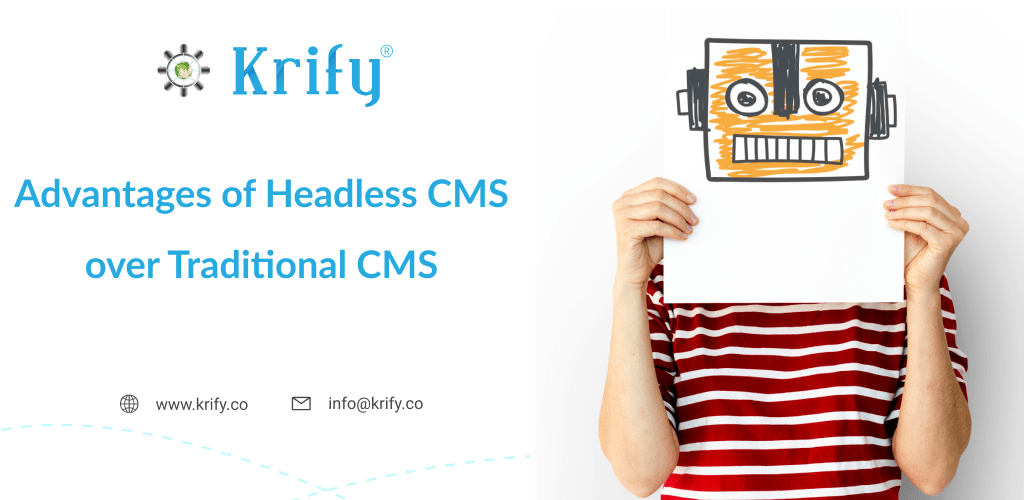CMS (Content Management Systems) have been critical in enabling organizations to efficiently manage their digital material. A new paradigm known as headless CMS, on the other hand, has evolved, challenging the old CMS strategy. Before we go ahead and understand the advantages of headless CMS, let us understand what is headless CMS and traditional CMS.
What is Traditional CMS?
A traditional CMS, or Content Management System, refers to a software application that combines the back-end content management capabilities with the front-end presentation layer. It tightly couples the creation, management, and delivery of content within a single system, often limiting flexibility and scalability.
What is Headless CMS?
Headless CMS, on the other hand, decouples the content management back-end from the front-end presentation layer. It provides content through APIs (Application Programming Interfaces), allowing developers to deliver content to multiple platforms and devices while maintaining flexibility, scalability, and improved performance.
Advantages of Headless CMS
In this article, we will look at the benefits of headless CMS over traditional CMS and how this novel design is changing the face of content management. Below are some of the advantages of Headless CMS
1. Flexibility and Agility:
One of the primary benefits of a headless CMS is its adaptability. A headless CMS separates the front-end display from the back-end content management system, unlike standard CMS, which tightly integrates them. This allows enterprises to distribute information across various channels and platforms, including websites, mobile apps, smart devices, and emerging tech like virtual reality. This design flexibility helps enterprises adapt to market changes and adopt new technologies seamlessly.
2. Improved Performance:
Headless CMS improves performance greatly by eliminating the front-end layer from the CMS. Conventional CMS often adds unnecessary expenses due to included features not needed for a project. With a headless CMS, developers have full control over the front-end, optimizing speed by removing unnecessary dependencies, resulting in faster-loading web and mobile experiences. This enhanced performance directly boosts customer satisfaction and engagement.
3. Omnichannel Content Delivery:
Delivering information consistently across numerous platforms is critical in today’s digital world. It enables businesses to easily publish content to many platforms and touch points, guaranteeing a consistent and unified user experience. It simplifies content distribution by offering APIs that allow developers to obtain and display material on any chosen platform, whether it’s a website, mobile app, IoT device, or even voice-enabled assistants. This omnichannel strategy improves brand consistency and boosts overall digital presence.
4. Future-Proofing and Scalability:
Older CMS solutions frequently struggle to keep up with technology’s fast progress. Businesses depending on traditional CMS may have issues in adapting their content management systems to new devices and platforms as they arise. Headless CMS, on the other hand, helps companies plan for the future by offering a scalable and adaptable basis. Businesses that have a clear separation between the front-end and back-end may simply incorporate new technologies and devices without having to redo their whole content infrastructure. Its scalability assures long-term survival and reduces the risk of becoming obsolete as technology improves.
5. Enhanced Developer Experience:
Developers value the independence and flexibility that a headless CMS provides. Traditional CMS often limits developers to a certain technology stack or framework given by the CMS provider. Headless CMS, on the other hand, allows developers to use their favourite programming languages, frameworks, and tools. This flexibility not only improves the developer experience, but it also allows for shorter development cycles, better collaboration, and the opportunity to harness the most recent development methods and trends.
Conclusion:
As digital experiences become increasingly complex and diverse, headless CMS emerges as a game-changer in the field of content management. The advantages of its flexible architecture, improved performance, omni channel content delivery, future-proofing capabilities, and enhanced developer experience make it a compelling choice for businesses seeking to optimize their content management processes. By embracing the headless CMS approach, organizations can unlock new possibilities, stay ahead of the curve, and provide exceptional digital experiences to their audiences across various platforms and channels.
At Krify , we look forward to assisting our clients with the latest technologies and following the latest trends. Our team of enthusiastic developers are always keen to take up the challenges and convert their dreams into reality. If you would like to know more about headless CMS, we have a team of professionals who can assist you on queries related to headless CMS. For more information, contact us.



